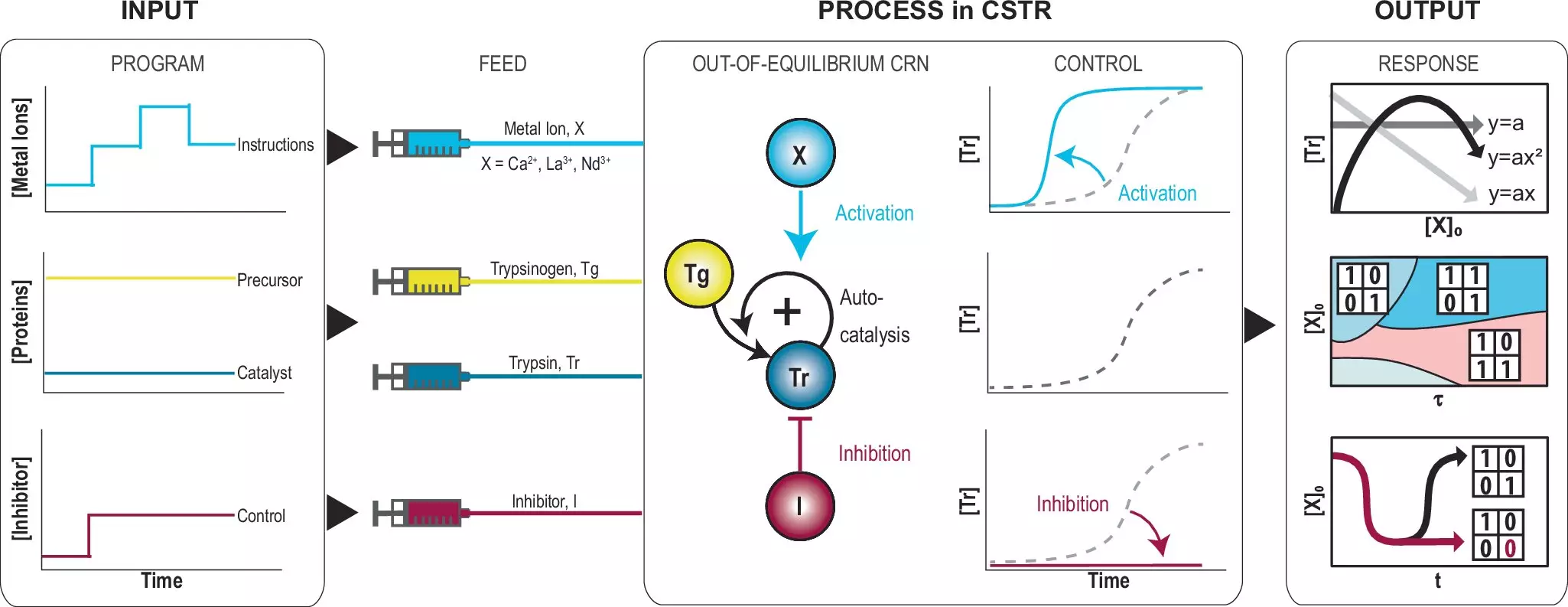Recent advancements by researchers at the University of Twente herald a significant leap in the field of chemical computing. Their innovative method empowers precise control over chemical reactions via metal ions, putting them on a path that could explore computing systems that emulate human cognitive functions. This promising development was shared in a recent publication in the journal *Nature Communications*, adding to the growing body of research aimed at bridging the gap between biological systems and computational technology.
The capability of living organisms to adapt to environmental changes hinges on intricate networks of chemical reactions. These biological processes are distinguished by their lower energy consumption compared to traditional digital computing. Unlike digital systems that operate through binary data manipulation, natural systems utilize a unique form of information processing. For years, the scientific community has pursued the ambition of mimicking these biochemical processes using synthetic molecules—a quest that has now demonstrated a tangible breakthrough.
In their latest study, the researchers successfully emulated complex mathematical functions by manipulating metal ions. They were able to replicate various polynomial functions, such as linear equations and parabolas, as well as logical Boolean functions—crucial for decision-making processes based on changing inputs. This marks a foundational shift not only in theoretical chemistry but also in practical applications, whereby chemical systems could behave similarly to programmable computers.
One of the pivotal discoveries of this research lies in the programming of chemical reactions to create a form of memory. The team, led by researcher Albert Wong, demonstrated their capability to induce a state of “remembrance” within chemical reactions. Specifically, they focused on autocatalytic reactions, where the reaction product accelerates the process itself, allowing for a sophisticated level of interaction that replicates memory retention. By manipulating the conversion of trypsinogen to trypsin, the researchers incorporated a substance that temporarily suppresses this conversion, resulting in a dual-state system. This fascinating process reveals the potential for chemical systems to store and process information, akin to digital memory.
The ramifications of this discovery extend well beyond theoretical explorations; they could revolutionize the landscape of artificial intelligence and material science. By programming chemical networks with the ability to store information, researchers envision a cadre of new applications emerging within smart materials and intelligent system designs. Moreover, the implications stretch into nanobiotechnology and the ongoing inquiry into the primordial chemical foundations of life. The pathway carved out by this research not only bridges the disciplines of chemistry and computer science but also sets the stage for future innovations that could transform our understanding and utilization of information processing in the natural world.
The University of Twente’s research emphasizes a transformative vision of chemical reaction control and programming. This advancement symbolizes a significant step toward a new paradigm in computing—one that mirrors the efficiency and intelligence seen in nature. As researchers continue to discover and optimize these systems, the potential for groundbreaking applications is both exciting and promising.


Leave a Reply